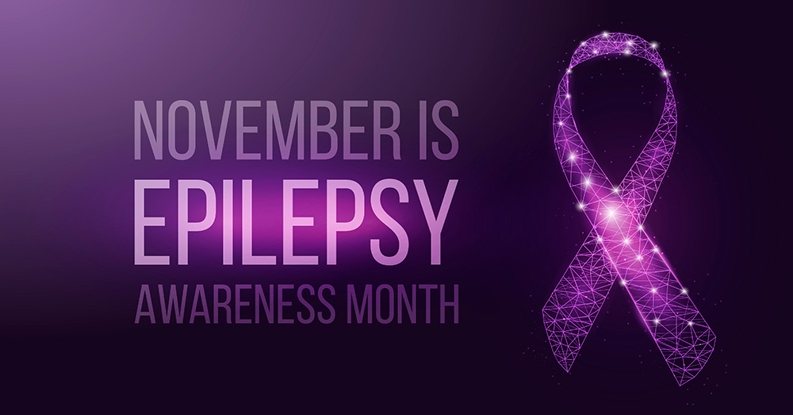Manifestation and Positive Thinking: How Your Mindset Impacts Your Health
- Category: Southwest General Medical Group, Neurosciences, Behavioral Health, Women's Health, General Health, Family Medicine, Cancer Care, Geriatric Behavioral Health
- Posted On:

You may have heard people talk about “manifesting their dream life” or “thinking positively” to feel healthier and happier. These terms often are used interchangeably; however, they’re actually quite different, and both can have meaningful effects on your mental and physical well-being.
Let’s explore what manifestation and positive thinking are, how they differ and why your mindset might be one of your most powerful health tools.
What Is Manifestation?
Manifestation is the practice of turning your goals and desires into reality through intentional focus, visualization and a strong belief in their potential. It's based on the idea that your thoughts, emotions and actions can influence the outcomes in your life.
While some people view manifestation as a spiritual or mystical process, many psychologists and life coaches frame it as a powerful mindset technique that combines clarity, motivation and consistent effort.
How to Practice Manifestation
Manifestation typically involves a few key steps:
1. Set a clear intention
Vague wishes, such as “I want to be happy,” are harder to pursue. Try to get specific. For example:
- “I want to find a new job that pays well and aligns with my passions.”
- “I want to improve my energy and feel stronger through exercise.”
- “I want to rebuild my relationship with my sister.”
2. Believe you can achieve it
The next step is to truly believe you’re capable of achieving your desired result. This isn’t about unquestioning optimism—it’s about shifting from “I hope I can” to “I know I can.”
If that feels out of reach, start by challenging the inner voice that says you can’t. Replace it with proof—small, consistent actions that show you’re moving forward. Every step you take builds confidence, strengthens your mindset and reinforces the belief that your objective is within reach.
You don’t need to have it all figured out. You just need to believe that progress is possible—and that you’re capable of making it.
3. Visualize it regularly
Spend a few minutes, on a regular basis, imagining what reaching your vision would look and feel like. What do you see? How do you feel emotionally? Where are you? What are you doing? This helps your brain start to perceive it as possible and real.
4. Take action
Manifestation isn’t about waiting for magic to happen. It requires action. Once your vision is defined, and you’ve aligned your mindset, take real steps toward making it happen—apply for that job, schedule your first workout, reach out to your sister.
What Manifestation Can Look Like
Manifestation isn’t just about thinking positive thoughts—it’s a process that combines mindset with action. The following examples show how real people can use all five steps:
- A person sets a goal to run their first 5K. They believe they can build endurance over time, even if they’re new to running. Each day, they visualize crossing the finish line, feeling strong and accomplished. They follow a training plan, track progress and celebrate small improvements along the way. To stay motivated, they focus on how good movement feels and remind themselves how far they’ve already come.
- An individual recovering from a serious illness sets a goal to regain strength and independence. They work on believing in their body’s ability to heal, even during tough days. Every morning, they visualize themselves walking with ease, enjoying time with family and doing things they love. They follow their treatment plan, attend therapy and ask for help when needed. They practice daily affirmations and focus on gratitude to maintain a hopeful mindset through recovery.
A key ingredient in staying motivated through manifestation is developing a generally positive mindset—let’s take a closer look at how that works.
What Is Positive Thinking?
Positive thinking is a mental attitude that focuses on optimism, hope and constructive responses to life’s challenges. It’s not about ignoring negative realities or pretending things are fine—it’s about how you choose to frame situations and respond to them.
Where manifestation often is goal-focused, positive thinking is a broader mindset you carry into everyday situations.
How to Practice Positive Thinking
Developing a more positive mindset isn’t about pretending everything’s great—it’s about training your brain to see the whole picture, especially the parts that are going well. Here are five steps to help you build and sustain a more positive outlook:
Step 1: Recognize negative thought patterns
Begin by becoming aware of how your mind responds to various situations. Do you immediately assume the worst? Blame yourself unnecessarily? Ignore the good in favor of the bad? Identifying these habits is the first step toward changing them.
Step 2: Shift your viewpoint
Once you catch a negative thought, challenge it. Ask yourself: Is this really true? Is there another way to see this? Shifting to a more positive outlook can help you see setbacks with more balance and less judgment. For example, when bad weather ruins your outdoor plans, use it as an opportunity to enjoy a cozy day indoors with a book or movie you’ve been meaning to get to.
Step 3: Practice gratitude
Make it a habit to notice what’s going right. Write down a few things you’re grateful for. Research indicates that focusing on the good can enhance happiness, optimism and even improve sleep quality.
Step 4: Visualize a positive future
Take time to picture what a thriving life looks like for you—your health, relationships, work and goals. Write down that vision in detail. Imagining a hopeful future can improve your mindset in the present.
Step 5: Use your strengths intentionally
Focus on a personal strength, such as resourcefulness, resilience or generosity, and find a new way to put it into action. Using your strengths with purpose not only builds confidence but has been shown to boost happiness over time.
Examples of positive thinking
- After receiving critical feedback at work, instead of spiraling, you think: “This is a chance to improve and grow.”
- When stuck in traffic, rather than getting angry, you listen to a favorite podcast and think, “I can’t change this, but I can make the best of it.”
- You face a health scare, and focus on being proactive: following up with your doctor, getting educated and staying hopeful about treatment options.
Manifestation vs. Positive Thinking: What’s the Difference?
While both are rooted in the power of your mindset, they serve different purposes.
Manifestation | Positive Thinking |
Focuses on achieving specific outcomes | Focuses on your general outlook |
Involves visualization, intention-setting, affirmations and goal alignment | Involves optimism, resilience and thought reframing |
Future-focused | Present-focused |
Requires action toward a vision | Encourages acceptance and hope |
Often tied to motivation and achievement | Often tied to emotional well-being and stress reduction |
Think of it this way: positive thinking helps you respond to the world more constructively, while manifestation enables you to shape the world you want to create.
How Do These Practices Impact Your Health?
The mind-body connection is powerful, and research supports the idea that positive thoughts can influence everything from stress levels to heart health.
1. Less stress and anxiety
Positive thinkers tend to experience lower levels of cortisol, the stress hormone. Similarly, people who engage in manifestation often feel more empowered and less helpless, which reduces anxiety.
2. Increased immune function
Optimism has been linked to stronger immune responses, meaning your body may be better equipped to fight illness when your mindset is positive.
3. Lower risk of chronic disease
Studies show that optimistic people have a lower risk of heart disease and may even live longer. That’s partly because they’re more likely to adopt healthy habits and stick to treatment plans.
4. Better mental health
Manifestation and positive thinking can both enhance mood, boost motivation and reduce the risk of depression. They promote hope, purpose and confidence in one’s ability to make meaningful change.
5. Improved resilience
Resilience is the ability to cope with challenges and recover from setbacks. Positive thinking helps by encouraging problem-solving, fostering hope and motivating people to take action rather than give up. Optimistic thinkers also are more likely to seek support and use healthy coping strategies, key traits of resilient individuals.
While manifestation often is viewed as a personal development tool, it also can support your health in meaningful ways. By encouraging goal clarity, reducing stress and promoting positive thinking, manifestation practices such as visualization and intention-setting can enhance mental well-being, increase motivation for healthy habits and strengthen one's belief in their ability to create change, all of which contribute to better overall health.
Getting Started: Tips for Building a Healthier Mindset
Here’s how you can start incorporating both practices into your life today:
Morning manifestation routine
- Start with three deep breaths.
- Write down one thing you are striving for.
- Visualize yourself achieving it for 2–3 minutes.
- Write or repeat an affirmation like “I am on the path to becoming my healthiest self.”
- Take one small action toward your goal, no matter how small.
Positive thinking habits
- Each evening, write down three things that went well today.
- Catch and reframe negative thoughts during the day.
- Choose to respond with curiosity rather than frustration in challenging moments.
- Celebrate small wins—progress is progress!
When to Seek Support
While these tools can be beneficial, they’re not a replacement for medical care or mental health treatment. If you’re feeling overwhelmed, persistently anxious or down, don’t hesitate to talk with your healthcare provider. You don’t have to do it all alone—healing happens best with support.
Final Thoughts
Manifestation and positive thinking aren’t just trends—they’re powerful ways to build a mindset that supports your goals, your health and your quality of life. Whether you’re working toward something new or just trying to stay grounded during challenging times, your thoughts have the potential to shape your reality.
At Southwest General, we believe in supporting every aspect of your well-being—mind, body and spirit.



